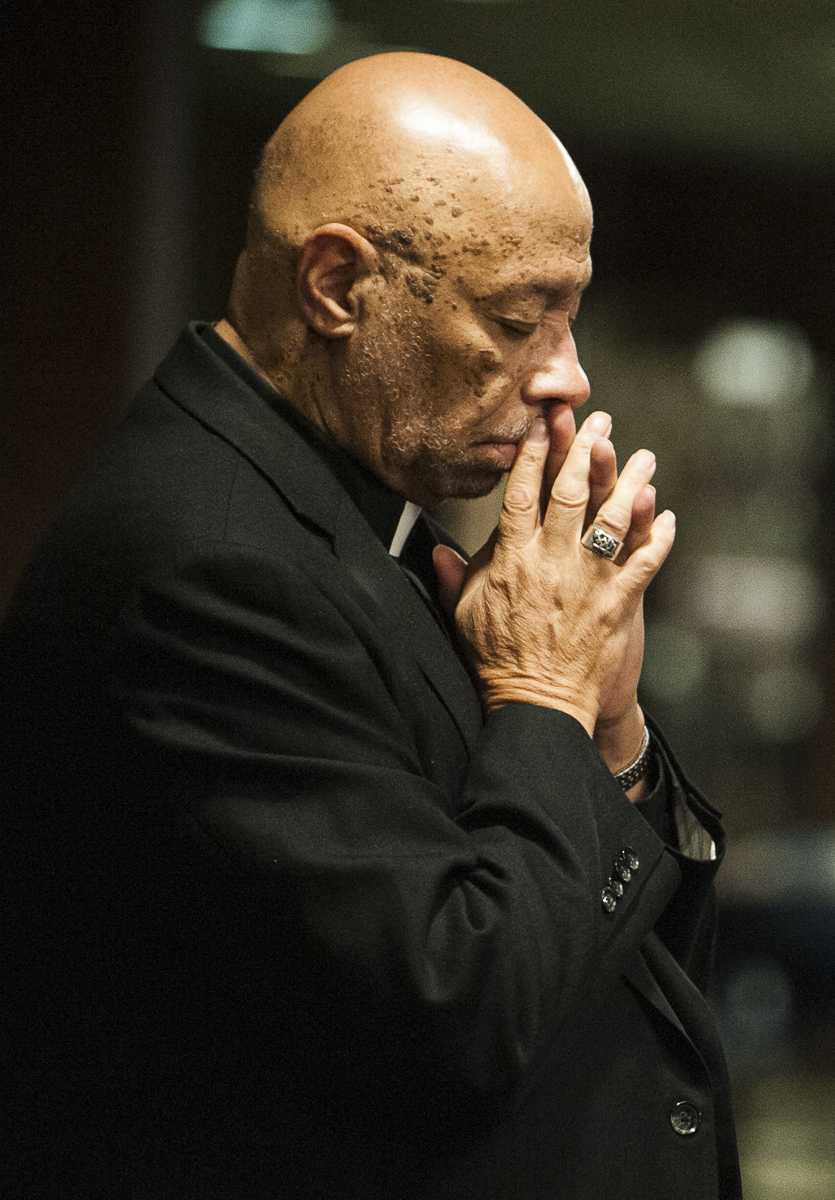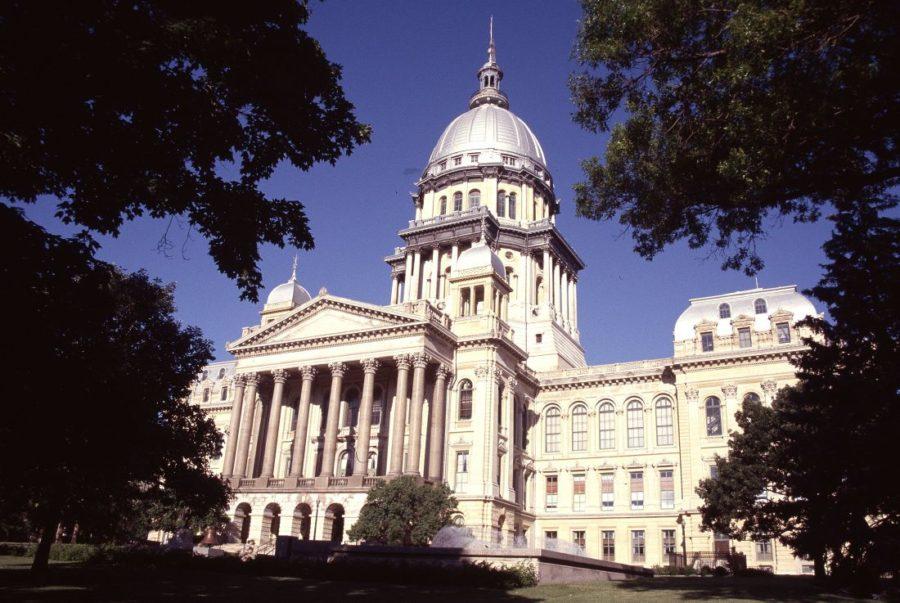Black studies struggle at Illinois universities under current fiscal climate
Illinois State Capitol in Springfield. (Chicago Tribune file photo)
September 6, 2016
When Western Illinois University cut its African-American studies major this summer, enrollment and graduation numbers were dismal. Thirteen students had picked it as their primary field of study in the 2015-16 school year, and three students had graduated with a bachelor of arts in the discipline in 2016, according to university data.
Western’s numbers aren’t unusual among Illinois’ public universities. Just a handful of students earn degrees in black studies each year, according to state education data. But in an era of uncertain state funding for higher education, scrutiny of low-enrollment degree programs is intensifying. Some black studies professors fear an increased focus on the numbers could be calamitous for a discipline they believe is already underfunded and shunned.
The conversation could have implications for other degree programs that perennially draw small enrollments. Some experts say academia shouldn’t be a popularity contest, and letting numbers decide what programs are offered means that some long-revered disciplines such as philosophy could lose a place in the ivory tower along with newer offerings like African-American studies and women’s history.
Advertisement
“Since African-American studies has been formed, there’s always been a battle to remain alive,” said Kelly Harris, associate professor and coordinator of African-American studies at Chicago State University. “It’s not just an African-American studies fight. The humanities and social sciences all feel like we’re under attack in this environment where universities tend to have a business mentality in the ways they look at higher education now.”
Illinois’ public universities award tens of thousands of four-year degrees each year. Barely two dozen are in African-American studies.
Illinois Board of Higher Education figures show 14 students at public colleges and universities received a bachelor’s in the field in the entire state in 2014, the most recent year for which information is available. Sixty students had declared it as their major that year.
The landscape hasn’t changed much over the past 20 years. The most prolific year for the major was in 2012, when 21 students graduated with the degree and 68 picked it as their major. Some years logged only a single-digit number of graduates.
Then, in 2015, the Illinois Board of Higher Education began requiring the 12 state public universities to submit summaries on changes to academic degree programs, and what plans they had for programs that graduate relatively few students.
In that first report, IBHE defined adequate performance as granting at least 12 degrees per school for an associate’s program, at least six for a bachelor’s, at least five for a master’s, and at least one for a doctoral program over a five-year average.
Based on that criteria, five schools listed their four-year programs in African-American studies — also known as Africana studies at some schools — as “low-producing” between 2009 and 2013.
Advertisement*
University of Illinois-Urbana-Champaign granted eight degrees total over those five years. UIC awarded 25. Both programs were put under review by administration, according to the report.
Fifteen Chicago State students graduated with degrees in that five-year period. Eastern Illinois awarded nine degrees in its bachelor’s in Africana studies, an average of fewer than two each year. Chicago State planned to revamp its program to boost enrollment.
Western went a step further. In June, its board of trustees approved cutting the bachelor of arts option. It will continue to offer general education black studies courses and a minor degree program, which has had much stronger enrollment.
Western also closed its four-year programs in women’s studies, religious studies and philosophy, saying it was important for the school to gauge the economic viability of its curriculum.
IBHE spokeswoman Candace Mueller said reviewing enrollment and graduation figures is just one way to evaluate a program and is not meant to be the only metric for deciding whether a program needs to be restructured. Eastern Illinois, for example, is planning no immediate changes to its African-American studies program.
“Given the growing diversity of our student body and our state, it remains an important component of EIU’s program inventory,” university leaders wrote in the report. But Mueller said state education leaders are striving to graduate more people from college — 60 percent of the Illinois workforce by 2025 — so it is critical to determine if academic departments are on track to reach that goal.
“We support the vital work of streamlining and modernizing what public universities offer,” Mueller said. “One indicator that a program needs attention is the number of students choosing that major. If that number is low, it is useful to explore why. Sometimes, the university is best in the long run eliminating that program. Sometimes it needs reconfiguring to bring it up to date.”
African-American studies professors say the conversation is especially hard to stomach given their discipline’s history of existing in the margins. The field grew out of the civil rights movement of the 1960s and the demand for greater representation of blacks in academia, experts say.
Black students at San Francisco State University mobilized in the late ’60s to, among other things, establish a black studies division with its own chair, faculty and staff, and the ability to grant a bachelor’s degree in the field. The department, the first of its kind nationally, launched in 1968, according to a 2012 article in the Journal of Pan African Studies.
A 2013 study from U. of I. showed 361 colleges and universities in the United States had formal academic units devoted to black studies. Around 1,000 more offered courses in the field. But its origins in social activism during a virulent time for race relations meant the field was not always embraced, experts said.
“Black studies [departments] across this country were not put on college campuses because faculty saw the inherent validity of the discipline,” said Joseph A. Brown, Africana studies professor at SIU. “They were put there because of community agitation and student unrest. So they’ve always been under a political scrutiny that history and sociology haven’t been under. These programs, in the minds of many people, don’t belong on college campuses anyway.”

Several professors and department chairs say the discipline suffers because it is not integrated into students’ core curriculum in the way other subjects are. Said another way, AAS is not always thought important enough to teach to a general population of students, thereby limiting its reach and ability to attract potential majors.
“Higher education, particularly state schools, are being pushed to demonstrate a kind of economic value,” said Jane Rhodes, UIC chair of African-American studies. “In my point of view, that’s deeply anti-intellectual and that flies against the face of what a college education is supposed to do. I think universities have failed to demonstrate to students why these disciplines and fields … that are not obvious career paths are vital, intellectual and experiential pursuits.”
There are some signs of change.
Undergraduate students at U. of I. are required to take two courses, one that focuses on Western culture, to meet the general education cultural studies requirement. Starting in fall 2018, students will be required to take three classes, including a Western culture course and one focused on U.S. minority culture. U. of I.’s Committee on Race and Ethnicity spearheaded that proposal, which was approved in May.
Ronald William Bailey, the African-American studies chair and head of that committee, said a key component to the new requirement is encouraging professors to creatively integrate minority culture studies into lessons in other subjects.
“Oftentimes we don’t take opportunities to cross disciplinary lines,” Bailey said. “I think there’s deep knowledge about this on our campuses and this provided us an opportunity to mobilize that broad social concern, but with a very high-powered academic and intellectual approach.”
The field as a whole is not on its last leg, by any means. African-American studies divisions are prestigious and flourishing at many private schools. For years, the Ivy League schools have poured funding into their departments and waged high-profile battles to recruit the most esteemed black scholars.
But in places where black studies programs are disintegrating, professors say that trend discredits the field and makes it harder to prove their worth in higher education.
“It’s a slippery slope” taking away a major, Harris said. “It reinforces for people that it’s not a serious thing because you can’t get a degree in it, you can’t major in it. People see it almost like a remedial-type class. That’s not where we want to go at all.”
___
(c)2016 the Chicago Tribune
Visit the Chicago Tribune at www.chicagotribune.com
Distributed by Tribune Content Agency, LLC.
Advertisement








